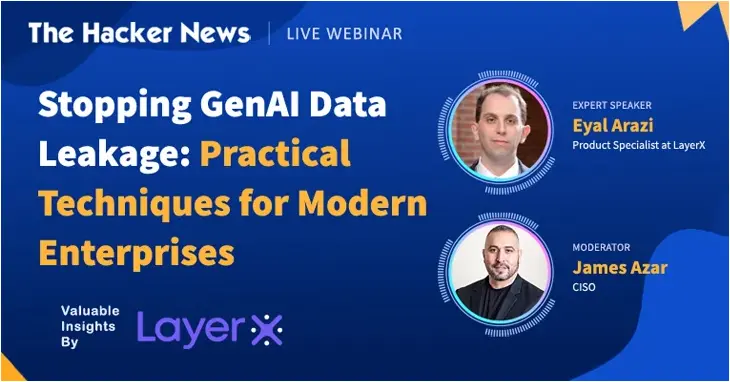Webinar: How to Protect Your Company from GenAI Data Leakage Without Losing It’s Productivity Benefits
GenAI has become a table stakes tool for employees, due to the productivity gains and innovative capabilities it offers. Developers use it to write code, finance teams use it to analyze reports, and sales teams create customer emails and assets. Yet, these capabilities are exactly the ones that introduce serious security risks.
Register to our upcoming webinar to learn how to prevent GenAI data leakage
When employees input data into GenAI tools like ChatGPT, they often do not differentiate between sensitive and non-sensitive data. Research by LayerX indicates that one in three employees who use GenAI tools, also share sensitive information. This could include source code, internal financial numbers, business plans, IP, PII, customer data, and more.
Security teams have been trying to address this data exfiltration risk ever since ChatGPT tumultuously entered our lives in November 2022. Yet, so far the common approach has been to either “allow all” or “block all”, i.e allow the use of GenAI without any security guardrails, or block the use altogether.
This approach is highly ineffective because either it opens the gates to risk without any attempt to secure enterprise data, or prioritizes security over business benefits, with enterprises losing out on the productivity gains. In the long run, this could lead to Shadow GenAI, or — even worse—to the business losing its competitive edge in the market.
Can organizations safeguard against data leaks while still leveraging GenAI’s benefits?
The answer, as always, involves both knowledge and tools.
The first step is understanding and mapping which of your data requires protection. Not all data should be shared—business plans and source code, for sure. But publicly available information on your website can safely be entered into ChatGPT.
The second step is determining the level of restriction you’d like to apply on employees when they attempt to paste such sensitive data. This could entail full-blown blocking or simply warning them beforehand. Alerts are useful because they help train employees on the importance of data risks and encourage autonomy, so employees can make the decision on their own based on a balance of the type of data they’re entering and their need.
Now it’s time for the tech. A GenAI DLP tool can enforce these policies —granularly analyzing employee actions in GenAI applications and blocking or alerting when employees attempt to paste sensitive data into it. Such a solution can also disable GenAI extensions and apply different policies for different users.
In a new webinar by LayerX experts, they dive into GenAI data risks and provide best practices and practical steps for securing the enterprise. CISOs, security professionals, compliance offices – Register here.
A considerable amount of time and effort goes into maintaining this website, creating backend automation and creating new features and content for you to make actionable intelligence decisions. Everyone that supports the site helps enable new functionality.
If you like the site, please support us on “Patreon” or “Buy Me A Coffee” using the buttons below
To keep up to date follow us on the below channels.



![Cobalt Strike Beacon Detected - 112[.]124[.]68[.]87:8080 1 Cobalt-Strike](https://www.redpacketsecurity.com/wp-content/uploads/2021/11/Cobalt-Strike-300x201.jpg)
